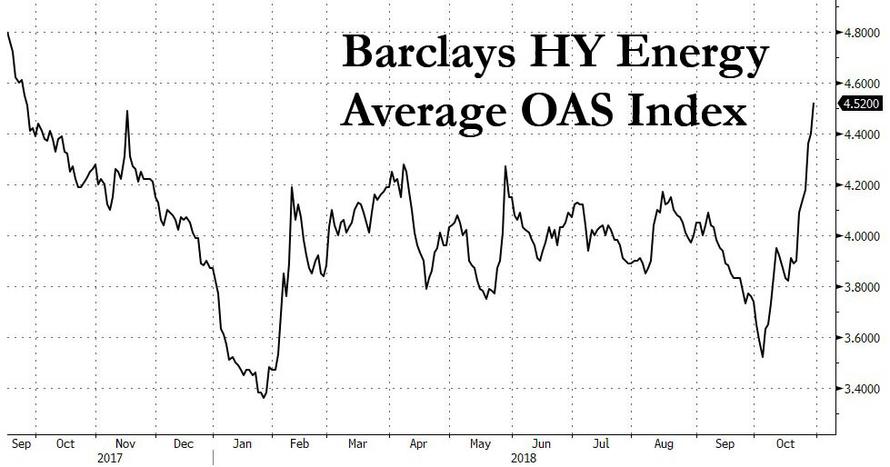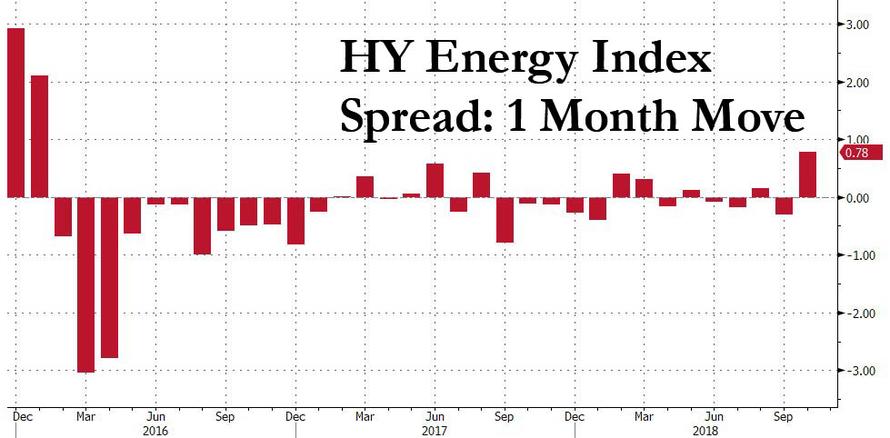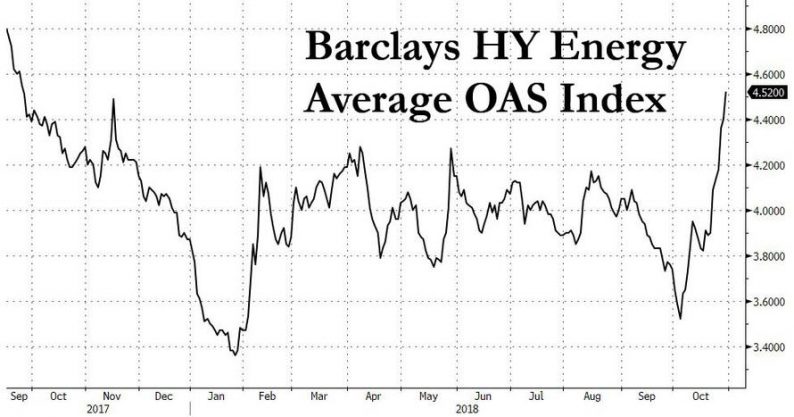Yesterday we discussed why as a result of recent weakness in a handful of shale names coupled with overall bearish market conditions, the Barclays High Yield Energy Index spread had blown out to 452bps, the widest since September 2017…

… making it the worst performing sector in the Bloomberg Barclays HY Index:

Furthermore, this was the biggest one-month move wider in energy HY spreads since the E&P crisis of December 2015/January 2016, when energy junk bonds blew out, as many shale companies defaulted on their debt.

And, according to Bloomberg, after a period of surprising resilience which saw junk spreads touch the narrowest since the financial crisis as recently as a month ago, October was the worst month for junk bonds since 2008.
October has been positive for high-yield bonds in every year since 2008, when the market tumbled almost 16 percent in the month.
And while October has been typically a good month for high yield, this month is on track for the biggest loss since December 2015 as equity volatility, economic fears, earnings and trade worries weigh.

After months of outperformance, U.S. high yield finally cracked, generating a -1.81% return in October, making it the second-worst performer of all the main bond market indexes and exceeded only by the 1.87 percent decline for global high yield.
The October rout wiped out more than two-thirds of all high yield YTD gains, and while the sector is still up 0.72% in 2018, it is well short of the 2.57% racked up by the close on Sept. 28. The former star performer in the space, the “triple hooks” or CCC-rated bonds, gave up half their YTD gains, and were up by 3.07%, compared to a 6.24% return at the end of last month. Meanwhile, investment grade bonds are now well in the red for the year, losing 3.5% after a 1.2% drop this month.
Meanwhile, as yields have continued rising on the back of the Fed’s higher rates, yields have moved to increasingly daunting levels, with the average “high” yield rising to almost 7%, up from about 5.5% at the start of this year, and the highest since July 2016. Meanwhile, yields on CCC companies have once again crossed the 10% mark for the first time since January 2017.










Leave A Comment